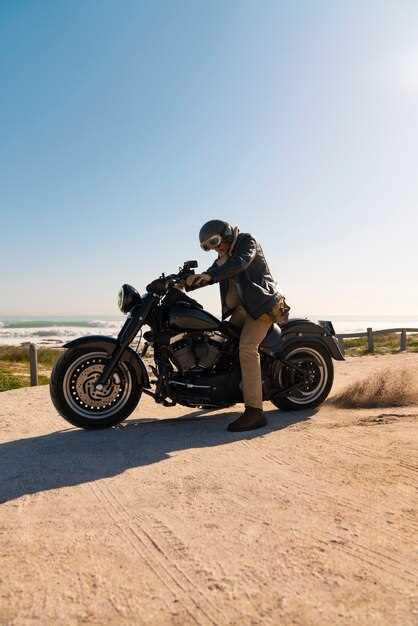

The evolution of motorcycles over the last century showcases a fascinating journey of innovation, engineering, and culture. From the rudimentary contraptions of the early 1900s to the sophisticated machines we see today, motorcycles have experienced remarkable transformations in design, technology, and functionality.
In the initial decades, motorcycles were often simple bicycle frames with a small engine attached. The introduction of the internal combustion engine revolutionized the industry, allowing for greater speeds and improved performance. This era saw the birth of iconic brands, such as Harley-Davidson and Indian, which laid a strong foundation for motorcycle culture in America.
As we progressed into the mid-20th century, motorcycles began to incorporate advancements such as disc brakes, electric starters, and more powerful engines. The post-war boom brought a surge in popular interest, leading to the emergence of various styles, including café racers and touring bikes. This period not only highlighted the mechanical advancements but also expanded the motorcycle’s cultural footprint, making it a symbol of freedom and rebellion.
Today, the motorcycle industry continues to evolve with the influence of cutting-edge technology. The introduction of electric motorcycles represents a significant shift towards sustainability and energy efficiency, while advancements in safety features, such as anti-lock brakes and traction control systems, enhance rider safety. The journey of motorcycles over the last century reflects a dynamic interplay of engineering prowess and societal trends, setting the stage for the future of two-wheeled transport.
Key Technological Advancements in Motorcycle Design
The evolution of motorcycles over the past century has been significantly shaped by numerous technological advancements in design. These innovations have not only enhanced performance but also improved safety, comfort, and fuel efficiency.
One of the most pivotal advancements was the introduction of the four-stroke engine in the early 20th century, which revolutionized power delivery and efficiency compared to the earlier two-stroke designs. The four-stroke engine provided better fuel economy and reduced emissions, making motorcycles more environmentally friendly.
Advancements in materials science have also played a crucial role. The transition from heavy steel frames to lighter materials such as aluminum and carbon fiber has resulted in motorcycles that are not only lighter but also more rigid, improving handling and performance. This shift has allowed manufacturers to design more agile and responsive motorcycles suitable for various riding styles.
Safety features have been significantly enhanced through technology. The incorporation of anti-lock braking systems (ABS) has drastically improved stopping power and stability during emergency braking. Additionally, modern motorcycles now often include advanced traction control systems that prevent wheel slip during acceleration, further enhancing rider safety.
Another remarkable advancement is the development of electronic fuel injection (EFI) systems, which provide precise control over fuel delivery. EFI contributes to smoother throttle response, improved fuel efficiency, and reduced emissions, making motorcycles more reliable and easier to maintain.
The integration of smart technologies in motorcycles has begun to reshape the riding experience. Features like GPS navigation, Bluetooth connectivity, and ride-by-wire systems allow for customized riding modes that adjust suspension and power delivery according to the rider’s preferences and riding conditions.
In summary, the evolution of motorcycle design has been heavily influenced by key technological advancements, including engine efficiency, materials innovation, enhanced safety features, and the digital revolution. These developments have paved the way for modern motorcycles that are more efficient, safer, and enjoyable to ride.
The Impact of Cultural Trends on Motorcycle Popularity

Motorcycles have played a significant role in popular culture throughout the last century. Various cultural trends have influenced their popularity, often shaping public perception and increasing their appeal. Below are key cultural trends that have impacted motorcycle popularity:
- The Post-War Boom:
After World War II, many soldiers returned home with a desire for freedom and adventure. The motorcycle became a symbol of liberation, leading to a surge in sales. The introduction of models like the Harley-Davidson Panhead exemplified this trend.
- The Counterculture Movement of the 1960s:
The motorcycle gained notoriety as a symbol of rebellion thanks to the counterculture movement. The film “Easy Rider” showcased the biker lifestyle, which resonated with youth seeking independence and an alternative to mainstream society.
- Entertainment and Media:
Movies, TV shows, and music have continually contributed to the allure of motorcycles. Iconic films and series, such as “The Wild One” and “Sons of Anarchy,” romanticized bikers, fostering a cultural image that attracted many to the sport.
- Fashion Trends:
The association between motorcycles and fashion has enhanced their appeal. Biker jackets, helmets, and accessories have transcended practical use, becoming fashion statements that attract diverse demographics.
- Environmental Awareness:
Recent trends towards eco-friendliness have also influenced motorcycle popularity. Electric motorcycles and scooters have arisen in response to a growing consciousness about sustainability, attracting a new generation of environmentally conscious riders.
- Social Media Influence:
The rise of social media platforms has enabled motorcycle communities to flourish online. Riders share their experiences, customizations, and adventures, creating a global culture that inspires newcomers and retains enthusiasts.
These cultural trends demonstrate that motorcycles are not just modes of transportation but also reflect broader societal shifts. As culture continues to evolve, so too will the perception and popularity of motorcycles among different demographics.
Environmental Considerations and the Future of Motorcycle Development

The increasing awareness of environmental issues has led to significant changes in motorcycle development over the last century. As global warming, air pollution, and resource depletion become pressing concerns, manufacturers are under pressure to create sustainable and eco-friendly models. The future of motorcycles will likely be shaped by advancements in technology, regulatory frameworks, and consumer demand for greener alternatives.
One major trend is the shift towards electric motorcycles (e-motorcycles), which produce zero emissions during operation. The development of high-capacity batteries and improved charging infrastructure has enabled electric models to achieve longer ranges and faster charging times, making them more practical for everyday use. Innovations in energy recovery systems and lightweight materials also help enhance performance while minimizing environmental impact.
Moreover, alternative fuels such as biofuels and hydrogen are gaining traction in the motorcycle industry. These fuels provide a potential pathway to reduce greenhouse gas emissions associated with traditional gasoline-powered bikes. Manufacturers are exploring ways to adapt existing engines to run on alternative fuels, thus extending the life of current infrastructure while embracing greener technologies.
Regulatory measures will also play a critical role in shaping the future of motorcycles. Stricter emissions standards and government incentives for low-emission vehicles are prompting manufacturers to invest in research and development for cleaner alternatives. Collaboration between governments and the motorcycle industry will be vital in establishing effective policies that address environmental concerns while promoting innovation.
Consumer awareness and collaborative practices can further drive the push towards sustainability. Riders today are increasingly interested in the environmental impact of their vehicles, demanding transparency from manufacturers. Engagement in recycling initiatives and sustainable sourcing of materials can enhance the green credentials of motorcycle brands, influencing purchasing decisions and fostering loyalty among eco-conscious consumers.
In conclusion, environmental considerations are reshaping the motorcycle industry, creating a future that prioritizes sustainability without compromising performance or enjoyment. The integration of electric technologies, alternative fuels, and responsive regulatory frameworks signifies a pivotal shift towards eco-friendly mobility solutions in the realm of motorcycling.





